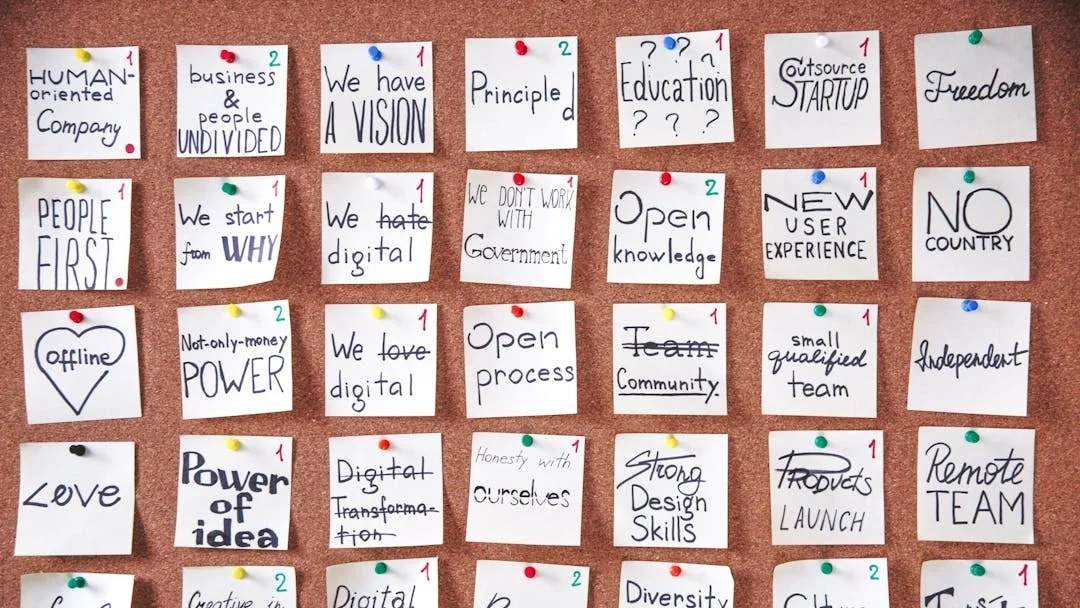Product Development, Business
Why Qualitative Insights Are Your Secret Weapon for Better UX
When building a product, numbers matter. Metrics, analytics, dashboards—they all help you understand what is happening in your product. But if you stop there, you're only getting half the picture.
To truly understand your users, you need to know the why behind their actions. That’s where qualitative insights come in. At Roaring Infotech, we believe this kind of feedback is gold—and when used right, it can completely transform the user experience (UX).
Let’s break it down.
What Are Qualitative Insights (and Why Should You Care)?
Qualitative insights are all about people’s thoughts, feelings, and behaviors. Unlike charts and percentages, they give you the story behind user actions. These insights come from things like:
- ✔️ Conversations with users
- ✔️ Observing how someone uses your app
- ✔️ Reading through reviews or support tickets
- ✔️ Even checking social media posts and comments
In short: they give you the context that numbers can't.
How We Do It at Roaring Infotech
Startups don’t always have the luxury of big research budgets or long timelines. That’s why we take a lean, scrappy, and practical approach to gathering insights.
Here are the tools we use:
User Interviews: Sit down (virtually or in person) with a real user and ask them how they’re using your product. It’s one of the fastest ways to uncover pain points you didn’t even know existed.
Surveys: Quick surveys—especially with open-ended questions—can reveal what users love, what’s confusing, and what they wish you’d fix or build next.
Focus Groups: Bring a small group of target users together and let them talk about your product. You'll pick up on patterns, reactions, and ideas you might miss in one-on-one chats.
User Testing: Watch people use your product in real-time. Where do they hesitate? What confuses them? Seeing it live is way more insightful than guessing.
Social Media Listening: Pay attention to what users are saying on Twitter, Reddit, Instagram, etc. Sometimes the most honest feedback lives in a comment thread.
Customer Feedback & Reviews: Whether it’s a feedback form on your app or reviews in the App Store, this is raw, direct insight. Read between the lines—it’s often more revealing than you expect.
Best Practices: Making the Most of Qualitative Feedback
1. Focus on the Problem, Not the Feature Wish List
DWhen gathering insights, your goal isn't to ask users what features they want—it's to uncover the real problems they’re facing. Most users aren’t product designers; they’re better at describing their pain points than suggesting solutions. Digging into those pain points helps you prioritize what truly matters and avoid building features that solve the wrong problems.
2. Go Deep Into the “Why”
Don’t settle for surface-level feedback. Try to get to the root of your users’ frustrations by observing how they use your product, asking open-ended questions, and truly listening. Whether it’s through interviews, user testing, or just watching them complete key tasks—every layer you peel back brings you closer to designing the right solution.
3. Start Small and Keep It Simple
You don’t need a huge research team or a hundred interviews to get valuable insights. Start with just a few users. Send out a simple survey, run quick calls, or even use a basic Google Form. The goal is fast, actionable feedback—not perfection.
4. Bridge the Gap Between Sales and Product
Your sales and support teams are constantly in touch with users. They hear frustrations, objections, and wishlists firsthand. Make sure that knowledge flows directly into your product conversations. When sales and product teams work hand-in-hand, you create better alignment around user needs.
5. Talk to a Range of Users
Don’t rely on feedback from just one type of user. Engage with different personas—new users, power users, churned users, even edge cases. You’ll start to see patterns that reveal universal pain points, or opportunities hiding in unexpected places. Then, prioritize based on which user types align most with your business goals.
6. Pair Qualitative with Quantitative
Qualitative insights tell you why users behave a certain way. Quantitative data shows you how often it’s happening. Use both together for a full picture. For example, if users say your app feels slow, check your metrics—maybe the onboarding flow is causing friction you can measure and fix.
Why This Matters
Qualitative insights help you build with empathy. They reveal what your users really need—not just what they click on. When you understand their feelings, frustrations, and motivations, you can design better experiences, avoid costly assumptions, and build products people love.
At Roaring Infotech, qualitative feedback is one of our most powerful tools. It helps us cut through the noise, focus on what really matters, and create products that connect.
Stay Tuned
In our next article from the Roaring Infotech Product Playbook, we’ll dive into scope discovery — how to decide what to build and when. Don’t miss it.



